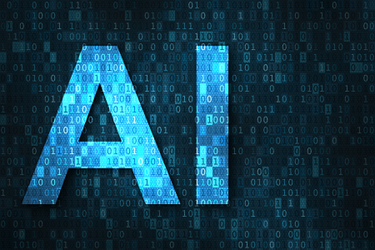Data Transformation The Foundation To AI And The Change Agent For The Future Of Work
By Bruce Orcutt, ABBYY

The biggest disruptions in an organization are the inefficiencies using paper, followed by having disparate processes that rely on manual labor to input and analyze unstructured data entering an organization from multiple entry points. For nearly 30 years, companies have been trying to eliminate manual processes and go paperless with the use of machine learning (ML) and natural language processing (NLP) technologies. Recently, there’s been a renewed interest in these technologies with the emergence and rapid deployment of robotic process automation (RPA) technology. Combined, the technologies are a foundation for content intelligence, a subset of AI, within businesses that promise to deliver more value than simply digitizing and improving processes.
Unlock Information In An Enterprise
The data locked within documents needs to be turned into information that becomes actionable within business processes and makes content available to any user or business. More impactful than digitizing data and processes, intelligent capture and content intelligence solutions are the impetus for the future of work.
The evolution of capture technology went from turning something analog (a piece of paper) into digital, to being something that’s more robust to help customers and enterprises accelerate business processes. As the technology matured, it started to understand the information within the document. It went from simply digitizing and storing a document to now being able to recall a form, an application or any other data asset to provide better customer service.
Context Within Content
Organizations have realized that their greatest asset is the data they have accumulated about their customers, partners, employees, even their competitors. What they were missing was the context within their content. Content intelligence enables us to understand the information, read the clauses, the terms and help the other systems in an organization make better decisions.
Information is more searchable and retrievable and enables us to now understand real context and relevance in order to sell a better product, deliver better service, accelerate a loan or credit application, provide business benefits or onboard a new employee faster.
Global Uses For Automating Cognitive Tasks
Global organizations like PepsiCo have automated their entire accounts payable process. They process invoices globally and, surprisingly, the majority of these invoices were still coming in via paper. Now, they are using content intelligence to understand the information on the invoice, extract the data and automate the process of being able to pay that invoice. It eliminated a lot of headache related to redundancies and errors.
Additionally, multi-national banks are leveraging this technology to provide onboarding or trade information, and obtain better analytics related to them. A challenge they overcame was a lot of the trade documents were submitted via fax, and now they can understand the information that’s within each trade transaction.
Furthermore, leading logistics and transportation companies are leveraging content intelligence solutions to automate the ingestion of shipping instructions, waybills, receipts and orders for identifying cargo; and the automatic classification and validation of data from Bill of Lading line items, Certificates of Origin, Commercial Invoices and more.
Impact On Work
The most recent memory of the first disruption on work was when Microsoft introduced word processors and spreadsheets. Similar to what’s being said now of AI in the workplace, there were differing opinions on how it affected workers. Some people say they lost jobs, others said they moved up the food chain to do higher value work. The impact technology has on the workforce is a fascinating phenomenon to see.
The same is true today. AI-enabling technologies will help workers automate cognitive tasks. Working with business contracts is an ideal example. Contracts are used for leases, wills, and many other business transactions that require someone to manually understand the elements of the contract, such as the entities and clauses, and be able to make business decisions based on the information contained within them.
Organizations need to understand when the contract terms start, end, potential penalties and what is recognize as revenue. Software has eliminated the need for workers to manually read the contract – it goes through and understands all the clauses automatically.
AI-enabling software sections the document, extracts the entities, understands the relationships between those entities and helps de-risk the value of that contract, then populates other business systems with relevant data. This frees the worker from inputting data into the system and to be more productive and effective at administering the terms of that contract.
Other examples of where technology is helping the average worker in regard to contracts is it can ensure revenue recognition is within compliance of finance, and that they are paying according to the actual terms. People are getting more information in real-time to help them complete their tasks. That’s where we see the benefits and why people are celebrating this technology versus thinking of it as a threat to their operations.
AI For Documents
The latest application of AI within business is within documents. AI for documents is the transformation of any content that’s coming in a paper or digitally-born document, to understand the data within it.
AI understands content, entities, sentiment and relationships as somebody would use to mine their database and back-end systems. AI uses machine learning technology to train their back-end systems to make better decisions, such as approving a loan or credit application, for example.
With all the hype surrounding AI in the enterprise, the reality is businesses will forever have documents entering and exiting their systems and need to be able to better manage the data, leverage it and use it for their competitive advantage.
Yet, AI has opened the door for robots in the enterprise. The concept of robots is exploding and dramatically changing the competitive landscape. Organizations are embracing the robotic concept because they believe in the digital worker and want to automate the digital worker’s tasks.
In order for these robots to make decisions and really benefit their users and businesses, we need to make robots smarter. This is where we will see the business value of incorporating RPA and intelligent capture to deliver AI that helps organizations overcome challenges they face, especially when dealing with content within documents.
About The Author
Bruce Orcutt is the Senior Vice President of Product Marketing at ABBYY, a global provider of content intelligence solutions and services. He has a deep understanding of image capture, document imaging, mobile platforms, text analytics, and content extraction, and how to integrate those technologies to deliver a world-class experience for customers and users.
